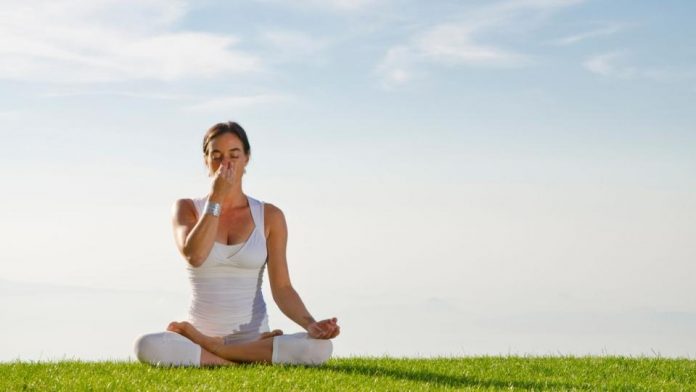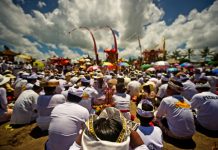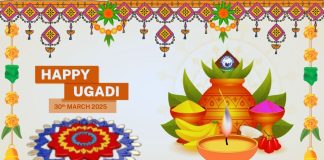Breathing is something we all do. Every day. All the time.
From the first breath at birth till the last breath at death, breathing is something we do without even thinking about it.
Breathing is living. It’s a vital function of life.
In the yoga tradition, breath is where a person’s life force resides, and it is referred to as pranayama.
Learning to work with the breath can have many benefits such as decreasing the effects of stress on the body as well as increasing overall physical and mental health.
In our online session with yogacharya Dr Pavitra Kumar moderated by Shalini Matai focused on 5 key pranayama breathing exercises to boost immunity. These were:
- Kapabhati
- Agnisara
- Suryabhedna
- Bhastrika
- Bahiya Kumbhaka
with Om chanting to complete the session. Recording of the session as below
Exercise 1: Kapalabhati. This rapid breathing technique is energizing and activates the sympathetic nervous system.
Sit up tall and lengthen the space between the navel and the heart. Breathe in and out through the nose. Draw your abdomen in during the exhalation and out during the inhalation. Make your breathing loud and quick. Try to equalize the strength and length of your inhales and exhales. Do not practice this breathing exercise if you struggle with vertigo or high blood pressure and it should be avoided by the pregnant women.
5 times alternate nostrils breathing, slow exhalation, forceful exhalation from the other nostril and so on 12 -20 times
Alternate nostril also 12-20 times
Slowly increase till you feel bit tired, build capacity
Eyes gently closed, so not to be disturbed by air pressure
Build capacity but do not push
Exercise 2: Agnisara – a yoga technique that combines elements of both pranayama and asana practice. The term comes from the Sanskrit, agni, which means “fire,” and sara, which means “energy,” “essence” or “cascade.”
Agnisara is typically practiced while standing or in a comfortable seated pose. If standing, the upper body leans forward and the hands rest atop the knees. The abdominal muscles are pulled in and up on an exhalation, then allowed to relax and return to their normal position on an inhalation.
1 stroke per second- 8 times
Exhale stomach goes in, forceful exhalation
Remember that Kapalabhati is from chest, Agnisara from stomach
Agnisara – 25 times in general, for problems unto 100 times. 15 times per minute
Shoulder rotation with inhale exhale
Arms up, fingers locked, chin down, inhale up, hold 5 seconds, face up, exhale – 5 times
Arms stretched out- inhale up, exhale down
Stand up-feet apart, hands on waist, exhale twist right, inhale center, exhale twist left, inhale center
Stand up-feet apart, left arm up inhale, exhale bend to right, inhale come up, repeat on other side
Forward bend – stand feet apart, arms up inhale, exhale bend forward- stay 5 breaths.
bend- Stand feet apart, hands at the back on waist, exhale bend backwards
Exercise 3: Suryabhedan Pranayam – Surya means the sun. In Surya Bhedan Pranayama the Surya Nadi or the right nostril channel is activated.
Suryabheda – close left nostril- breathe only from right side – inhale and exhale right nostril
Suryabhedan Pranayam- Close left, slow inhalation right, hold 5 count, exhale slowly left
Builds immunity, Helps Sinusitis, asthma, tonsillitis, low BP, digestion, diabetic, also helps balance Vata
Exercise 4: Bhastrika is an energetic pranayama exercise highly suitable for negating the sluggish feelings. This breathing method is also highly beneficial in weight loss, powering up the digestive system, and boosting the metabolism.
Long inhale- exhale with jerks (multiple) till complete breath exhausted
Bhastrika – for high BP and Heart problems – only 5, do gently
Exercise 5: Bahir Kumbhaka – is the controlled breathing with inhalation, holding the breath followed by exhalation.
Exhale, close nostrils, inhale. Hold maximum. Always followed ny Bhastrika
Number of Bhastrika = number of Bahir Kumbhaka
The 5 exercises were concluded with Om chanting.
Summary: Kapabhati, Alternate nostril, Agnisara, Suryabhedna , Bhastrika, Bahiya Kumbhaka, Om Chanting
Best times to practice – Morning and evening
Diet – empty stomach- Satvic foods- the ones that do not disturb our system.





